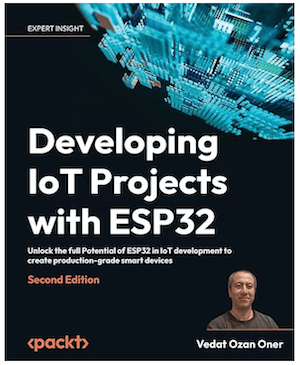Blog
Recent Posts
Unlock the Power of Embedded Connectivity with Copperhill’s ESP32‑S3 Development Board
Posted by on
 Meet your next go-to solution for industrial, automotive, and smart-HMI applications: a high-performance ESP32‑S3 development board featuring both Classic CAN and CAN FD, paired with a capacitive touch 480×854 IPS display. It’s purpose-built for seamless integration into modern IoT and diagnostic systems.
Meet your next go-to solution for industrial, automotive, and smart-HMI applications: a high-performance ESP32‑S3 development board featuring both Classic CAN and CAN FD, paired with a capacitive touch 480×854 IPS display. It’s purpose-built for seamless integration into modern IoT and diagnostic systems.
Engineered for Speed & Intelligence
At the core of the system is the ESP32‑S3‑WROOM‑1U‑N16R8 module, offering robust processing power via a dual-core Xtensa LX7 CPU running at up to 240 MHz. It’s equipped with 16 MB of flash memory and 8 MB of PSRAM, making it suitable for advanced graphical interfaces, real-time data processing, and AI acceleration. Wireless capabilities include Wi-Fi and Bluetooth 5 BLE, accessible through a U.FL connector for an external 2.4 GHz antenna.
Dual CAN Support: Legacy and Next-Gen
-
Classical CAN (ISO 11898-1) is supported natively through the ESP32-S3’s internal TWAI controller, providing compatibility with existing CAN 2.0B networks.
-
CAN FD connectivity is made possible through an onboard MCP2518FD controller, communicating over SPI and offering enhanced bandwidth and larger data payloads.
This dual-CAN design allows developers to bridge and prototype across both established and future-ready communication standards.
High-Quality Touch Display
The integrated 5-inch 480×854 IPS LCD offers vivid color, sharp contrast, and wide viewing angles. Combined with a capacitive touchscreen, it enables intuitive HMI designs and interactive controls. It's ideal for applications like vehicle dashboards, industrial terminals, and smart control panels.
Designed for Practical Integration
This board includes a thoughtful set of features to streamline development:
-
Native USB support (via USB-C) for direct programming and debugging
-
Wide power input range (7V to 24V DC) with onboard switching power supply and reverse polarity protection
-
Boot and reset buttons, status LED, and I2C expansion connector
-
External antenna support via U.FL connector (antenna not included)
These features make it a versatile choice for embedded development, whether in the lab or in field deployments.
Ideal Applications
This ESP32-S3 development board is an excellent platform for:
-
Automotive diagnostics, gateway controllers, and ECU emulation
-
Industrial automation and sensor aggregation systems
-
HMI panels for factory floors, smart farming, or building control
-
Wireless IoT nodes with high-speed CAN FD data integration
-
Embedded systems that require touchscreen UIs and real-time feedback
Why Choose This Board?
| Feature | Advantage |
|---|---|
| Dual CAN + CAN FD | Supports legacy and next-gen systems |
| ESP32-S3 performance | Handles AI, graphics, and wireless with ease |
| Capacitive touch LCD | Enables modern and responsive user interfaces |
| Wide power input range | Suitable for industrial and vehicle environments |
| External antenna option | Allows wireless performance optimization |
Final Thoughts
For developers seeking a compact yet powerful solution that integrates display, touch input, Wi-Fi/BLE, and dual CAN communication, this ESP32‑S3 development board delivers. It’s feature-rich, rugged, and ready for your next embedded project—whether you're prototyping or deploying.
Note: External 2.4 GHz antenna is required for wireless operation and must be connected via the U.FL port.
 ESP32, the low-cost, energy-efficient system-on-a-chip (SoC) microcontroller, has become a cornerstone of modern Wi-Fi-enabled devices, driving innovation across the Internet of Things (IoT) landscape. This comprehensive guide offers a practical, end-to-end approach to building secure, scalable IoT systems using the powerful ESP32 platform.
ESP32, the low-cost, energy-efficient system-on-a-chip (SoC) microcontroller, has become a cornerstone of modern Wi-Fi-enabled devices, driving innovation across the Internet of Things (IoT) landscape. This comprehensive guide offers a practical, end-to-end approach to building secure, scalable IoT systems using the powerful ESP32 platform.
From foundational concepts to advanced implementation, the book walks you through the complete lifecycle of developing an IoT device with ESP32. Beginning with essential IoT principles and real-world use cases, each chapter progressively builds your skills—covering sensor communication, integration of key libraries like LittleFS and LVGL, Wi-Fi connectivity, data security, and cloud integration. You'll also learn how to visualize real-time data using tools like Grafana, making your solutions truly production-ready.
A special section is dedicated to artificial intelligence and machine learning (AI/ML) for embedded systems. You'll explore how to build and deploy tinyML models on the ESP32-S3, enabling intelligent edge computing capabilities for your next-generation embedded products.
Adopting a hands-on, project-driven approach, the book ensures that you can apply your knowledge from day one. As a capstone, you'll develop a full-scale Smart Home system, consolidating all the concepts and technologies explored throughout the book.
Whether you're a maker, engineer, or embedded systems developer, this book equips you to build secure, real-world IoT solutions with ESP32—ready for deployment in today’s connected world. More information...
Unlock the Future of Marine Apps with the ESP32-S3 CAN Bus Board with NMEA 2000 Connector
As the marine industry continues to embrace smart technologies, there's a growing demand for powerful, connected, and reliable embedded solutions that can handle everything from engine diagnostics to GPS data aggregation. Whether you're building a marine monitoring system, an onboard data logger, or an intelligent control unit, you need a development board that offers high [...]
 Loading... Please wait...
Loading... Please wait...
